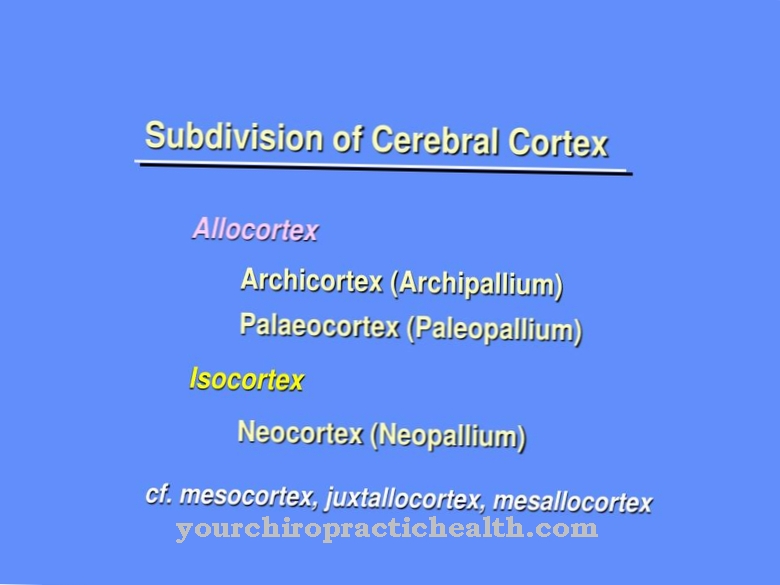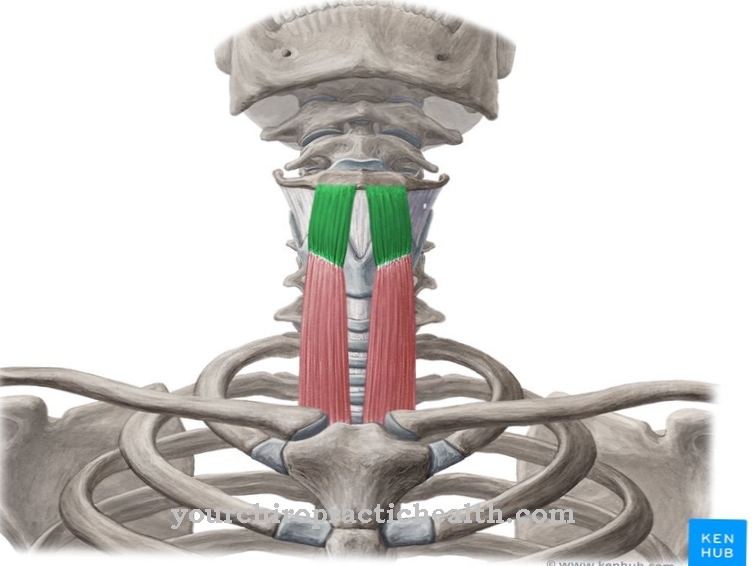The Olfactory tubercle is a small hump in the skull that houses the human brain. It is part of the olfactory tract. Smell perception comes into human consciousness through him.
What is the olfactory tubercle?
The olfactory tubercle is also called the Olfactory mound designated. Information or stimuli received from the air are transported from the olfactory mucous membrane of the nose to the other centers of the brain for evaluation.
The olfactory mound is significantly involved in this process. It has a strong influence on whether people continue to turn towards or away from a stimulus perceived from the air. However, this implies fewer odors of danger. Rather, it is about emotionally triggered smells. This can affect different areas of life. The choice of partner, for example. Smells that are associated with pleasure, such as food, are also evaluated via the olfactory tubercle.
If the smell is perceived as pleasant, behavior such as caring is triggered. In the event of a negative olfactory sensation, the olfactory tubercle causes motivational behavior that leads to turning away. From an evolutionary point of view, the olfactory mound belongs to the oldest part of the human cerebrum. It is assigned to the paleocortex and represents a small area in the cerebrum.
Anatomy & structure
The structures of the paleocortex form the human olfactory brain. It consists of the bulb and the olfactory tract, the olfactory tubercle, the septum with the stria diagonalis, the prepiriform cortex and parts of the amygdala, the corpus amydgaloideum.
The nucleus olfactorius anterior is located in the tractus olfactorius. In it, impulses from the olfactory bulb are interconnected and passed on to the opposite side of the olfactory cortex. Projection targets are located in the stria olfactoria lateralis. It is their job to transport perception into human consciousness via smell. They include the prepiriform cortex, the enorhinal cortex and the amygdaloid corpus.
The olfactory tubercle and the septum region are located in the medial olfactory stria. The olfactory tubercle is closely connected to the nucleus accumbens. In the region around the olfactory tubercle there are numerous vascular entrances on its surface. Therefore, this area is also known as the substantia perforata anterior. Opposite this is the substantia perforata posterior. It is located between the two crura cerebri.
Function & tasks
The function of the olfactory tubercle is the process of becoming aware of the smell that has been absorbed. It processes the olfactory stimuli that are received and passed on through the nose. The olfactory tubercle has no influence on perception itself. However, it is involved in modulating the behavior triggered by a smell. Most of the time, stimuli are received in a multisensory manner.This means that information is absorbed via the various sensory organs that can be causally assigned to a source.
Food, for example, has a certain visual appearance, smells in a certain way and has a certain taste. Everything is processed together in the brain and leads to further components of a served meal being absorbed or leaning against. The olfactory tubercle is assigned to the emotional and motivational area of the olfactory system. The information received via the olfactory mucosa flows via the olfactory tract, the medial olfactory stria and the olfactory tubercle and on to the septum.
This is located in the medial hemisphere, i.e. in the middle area of the brain. Dopaminergic neurons are located in the olfactory tubercle. Dopamine has an important influence on functions such as reward in the human organism. This means that the olfactory tubercle has the task of evaluating smells that are perceived as pleasant. At the same time, he is involved in strengthening or implementing the motivation to turn away in the event of a negative odor.
You can find your medication here
➔ Medicines for colds and nasal congestionDiseases
Impairments of the olfactory tubercle lead to an influence on the reward center in the human organism. This means that a change in behavior can be expected if there is a dysfunction of the olfactory tubercle.
Odors previously classified as pleasant are perceived as neutral in the case of lesions. This has an impact on social behavior and processes that are associated with a feeling of pleasure. Smells such as perfume, the smell of another person, the environment or food are perceived as no longer pleasant or less unpleasant. In particular, the ingestion of food is linked to the multisensory processing of the various stimuli. The smell of coffee already triggers certain associations. They can be associated with alertness or increased alertness.
The smell of a main meal already triggers the flow of saliva in the mouth. The same happens with sweet dishes. As soon as the olfactory tubercle is no longer fully functional, a corresponding restriction occurs. In addition, a person's smell is important when choosing a partner. A partner with a genetically identical material is not chosen evolutionarily to produce offspring.
The choice falls more on a partner in whom the offspring will produce the highest chances of survival and the most stable immune system. As soon as the olfactory sensation is restricted, the assessment changes. A partner odor that was previously classified as pleasant can no longer be sufficiently perceived. The social behavior towards this person changes automatically in certain nuances. The proverbial "I cannot smell this person" is based on true evolutionary causes and has one of its origins in the olfactory tubercle.
















.jpg)
.jpg)



.jpg)






